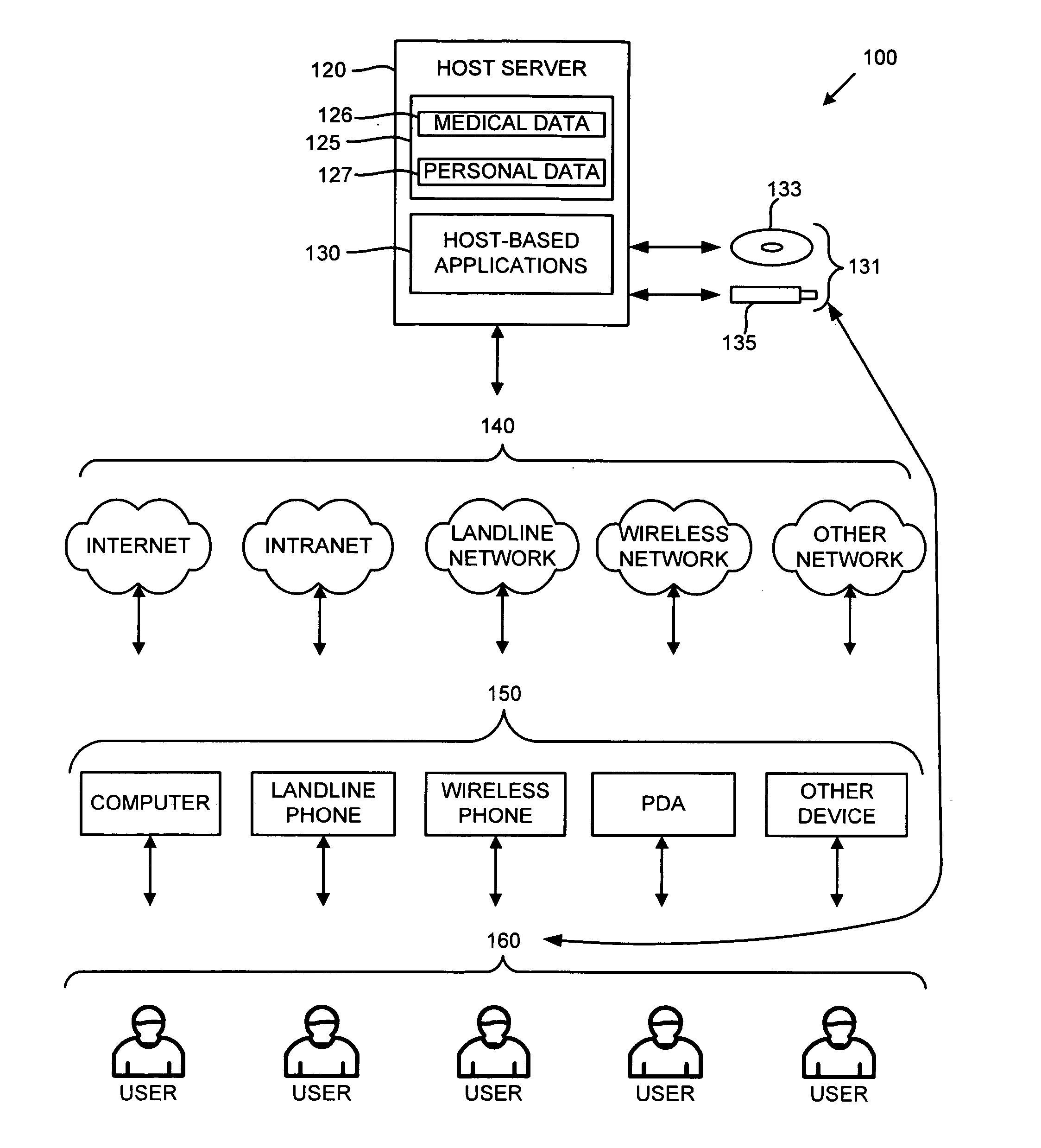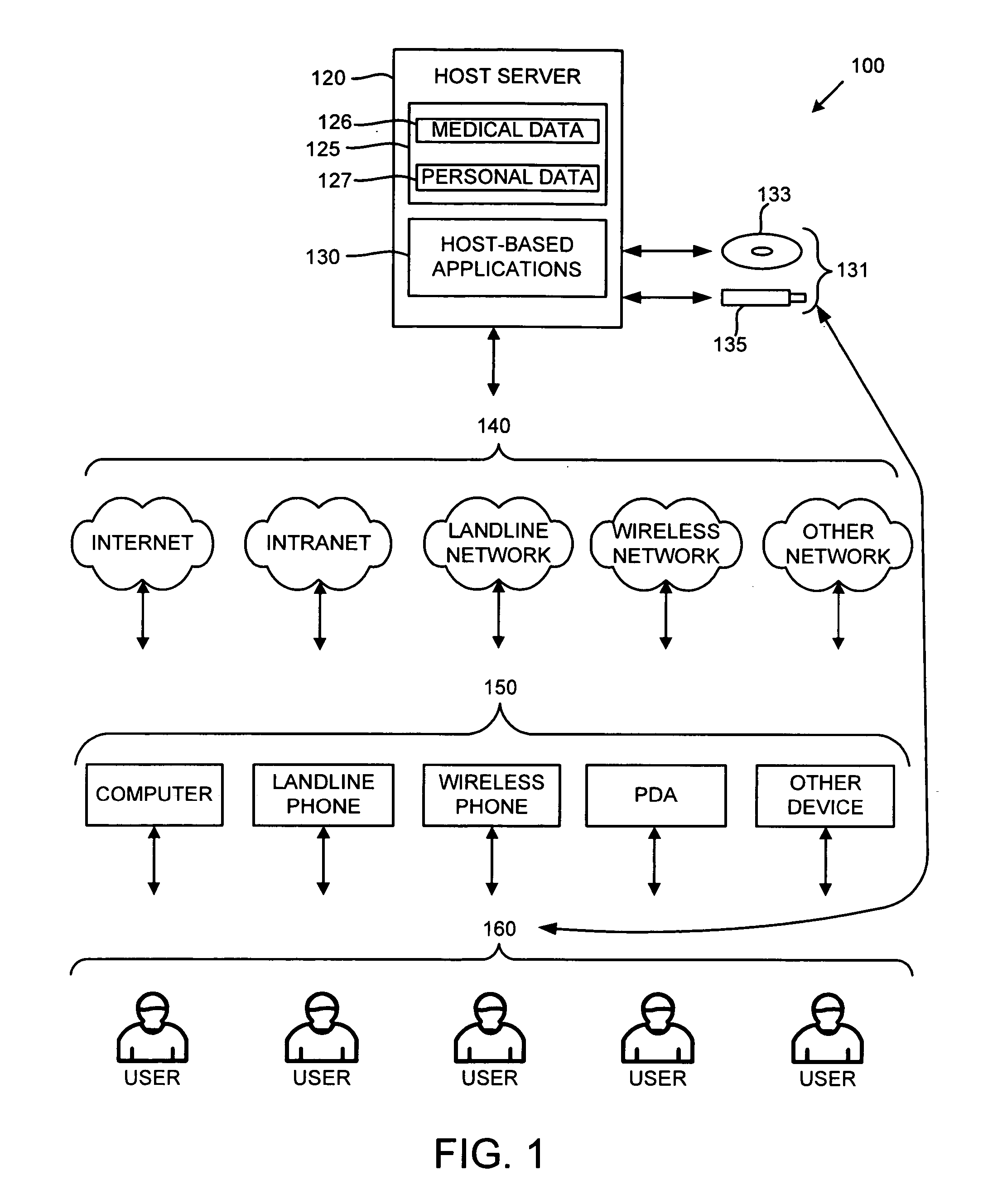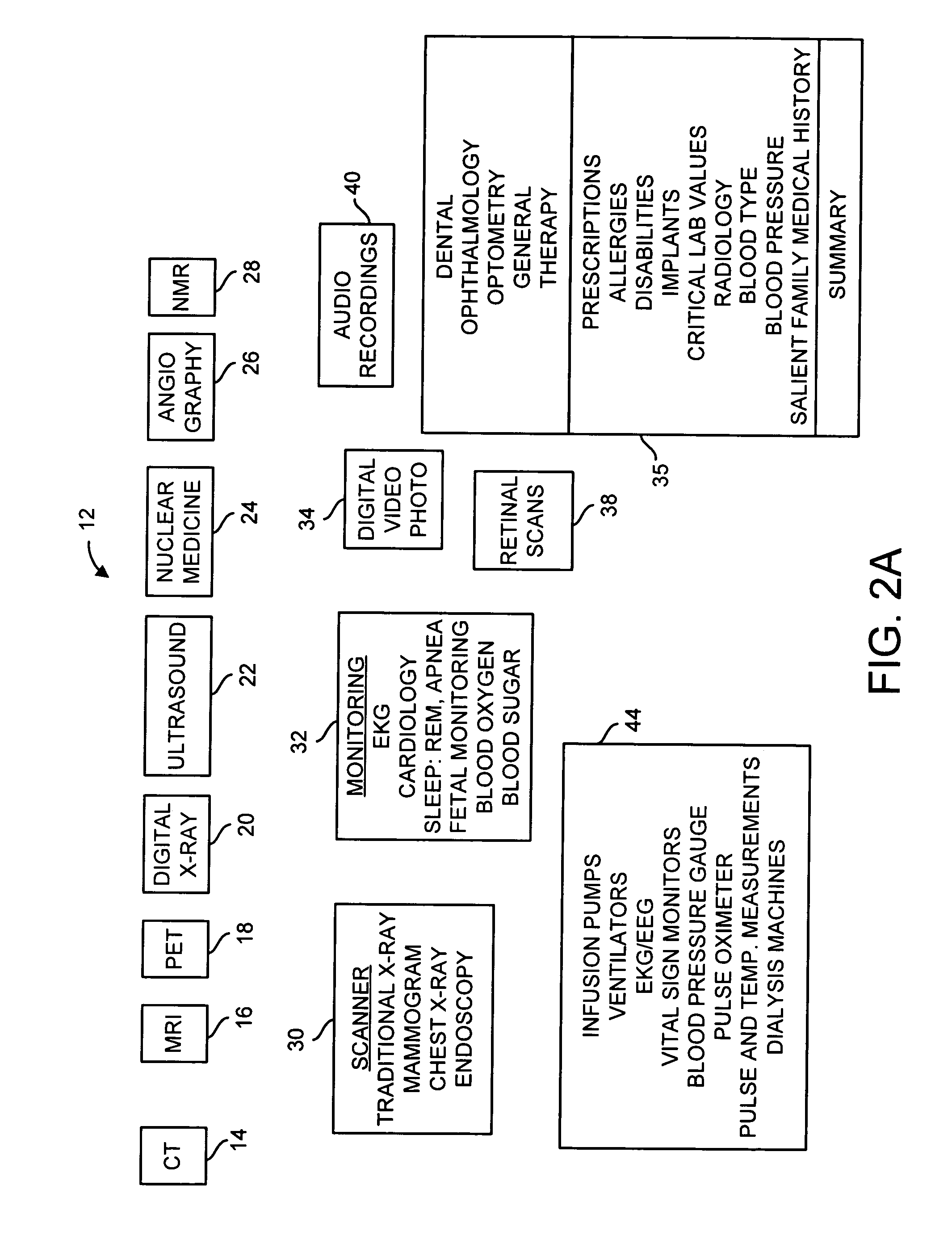Healthcare administration communication systems and methods
a communication system and health care technology, applied in the field of health care administration communication systems and methods, can solve the problems of cumbersome communication of data between mobile phones, inability to connect or connect, and generally less useful devices for providing significant communication of other data, so as to facilitate the exchange of medical information and facilitate the exchange of information
- Summary
- Abstract
- Description
- Claims
- Application Information
AI Technical Summary
Benefits of technology
Problems solved by technology
Method used
Image
Examples
Embodiment Construction
[0029] The detailed description set forth below is intended as a description of the presently preferred embodiment of the invention, and is not intended to represent the only form in which the present invention may be constructed or utilized. The description sets forth the functions and sequences of steps for constructing and operating the invention. It is to be understood, however, that the same or equivalent functions and sequences may be accomplished by different embodiments and that they are also intended to be encompassed within the scope of the invention.
[0030] Medical alert communication systems and related methods can be provided for sending customized alert notifications to remote user communication devices, such as wireless devices, over one or more networks. Upon receiving an alert notification, a user of such a communication device may securely log on to a host computer system and access further information. Such information may include, for example, medical data (i.e. ...
PUM
 Login to View More
Login to View More Abstract
Description
Claims
Application Information
 Login to View More
Login to View More - Generate Ideas
- Intellectual Property
- Life Sciences
- Materials
- Tech Scout
- Unparalleled Data Quality
- Higher Quality Content
- 60% Fewer Hallucinations
Browse by: Latest US Patents, China's latest patents, Technical Efficacy Thesaurus, Application Domain, Technology Topic, Popular Technical Reports.
© 2025 PatSnap. All rights reserved.Legal|Privacy policy|Modern Slavery Act Transparency Statement|Sitemap|About US| Contact US: help@patsnap.com



